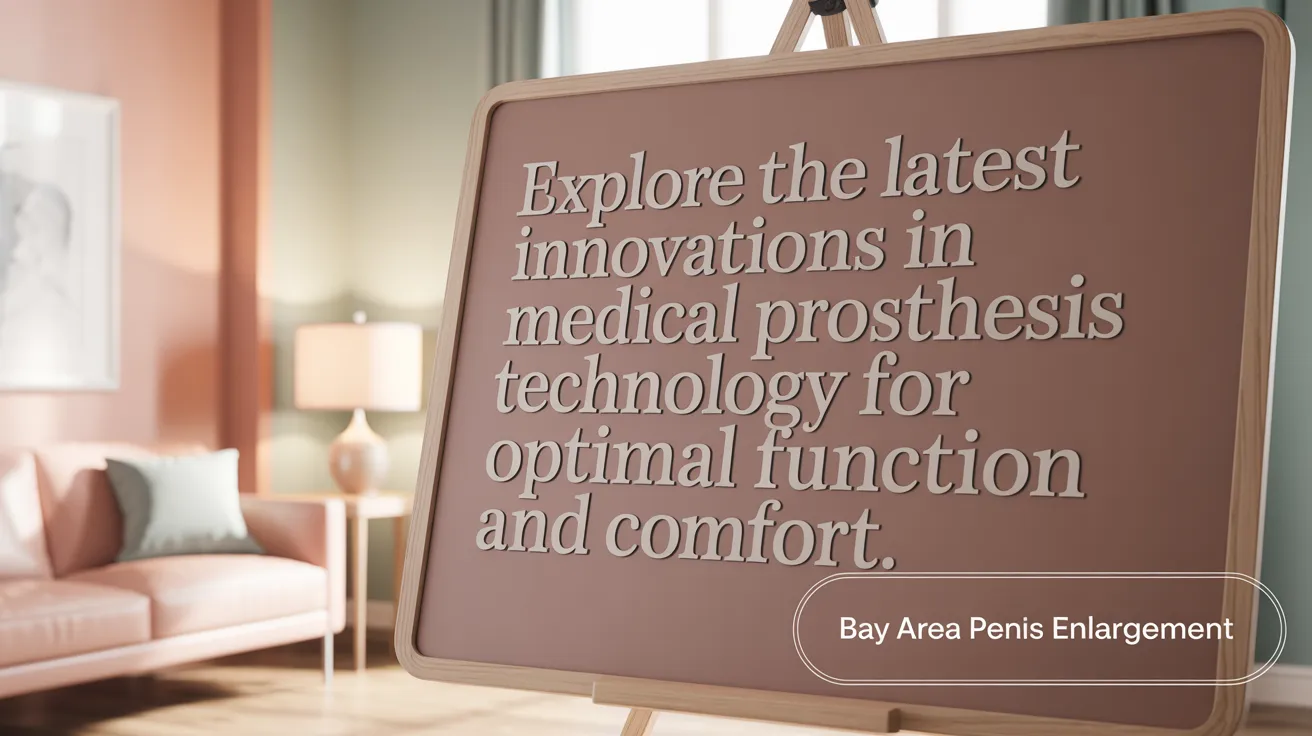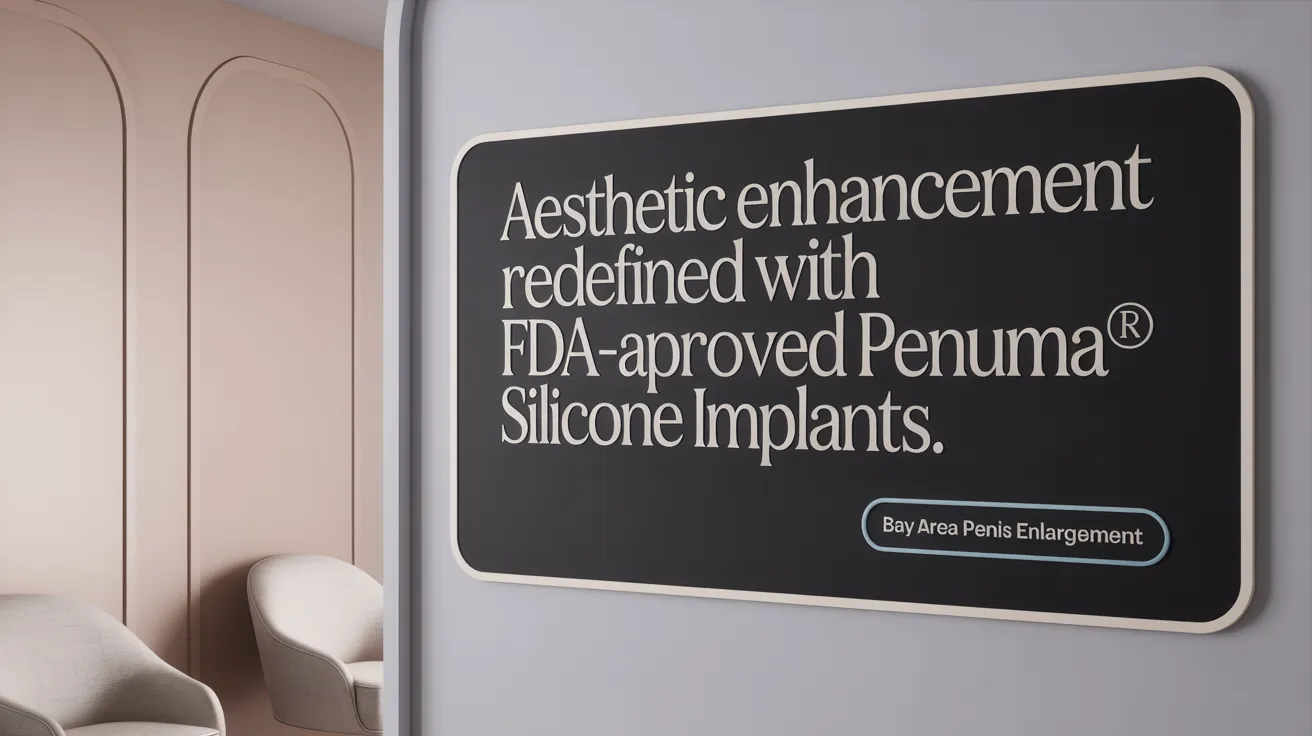Exploring New Frontiers in Penile Enhancement Surgery
Penile enhancement surgery has evolved significantly over recent decades, driven by advances in surgical techniques, implant technology, and a growing understanding of patient needs and psychological factors. This article explores the latest surgical innovations in penis enlargement, highlighting novel methods pioneered by experts, refined prosthetic implants, and emerging technologies shaping the future of the field. From inch gains to girth improvements, surgical options today offer safer, more effective, and cosmetically appealing results than ever before.
Tunica Expansion Technique: A Novel Approach to Enhance Length and Girth

What are the recent surgical innovations in penile enlargement?
One of the recent breakthroughs in penile enlargement is the tunica expansion technique (TEP). This innovative approach involves creating small, staggered incisions along the tunica albuginea, the tough fibrous covering of the corpora cavernosa. These strategic incisions enable controlled expansion of the penile shaft, increasing both length and girth without compromising the penis's structural integrity or function.
How is the TEP procedure performed, and what benefits does it offer?
Dr. Robert Valenzuela at Mount Sinai has refined the TEP procedure to enhance patient outcomes. Rather than multiple incisions or circumferential cuts, the surgery is done through a single, approximately 3-centimeter scrotal incision. This incision provides access to carefully mobilize the penile structures including the dartos muscle and Buck’s fascia.
Surgeons then make 2-3 millimeter staggered incisions on the tunica albuginea of the corpora cavernosa. This controlled expansion allows greater tissue stretch to accommodate increased size. Following this, standard penile prosthesis implantation can be performed if needed.
By using the scrotal route, this method avoids the need for circumcision, significantly reducing risks of infection and improving cosmetic results, especially beneficial for uncircumcised individuals. The smaller incision also contributes to faster recovery and less visible scarring.
What are the clinical outcomes and pain management strategies?
Clinical outcomes have been promising, with Dr. Valenzuela performing approximately 250 procedures annually and reporting an infection rate below 1%, which is well below the national average of 1-5%. Patients typically undergo surgery lasting 2-3 hours with same-day discharge and early drain removal within 2-3 days.
To control pain effectively, Dr. Valenzuela developed a specialized anesthesia protocol that uses a local nerve block. This approach minimizes or even eliminates the need for narcotic pain medications, promoting a more comfortable and safer postoperative experience.
How does TEP compare with traditional methods?
Traditional penile enlargement often involved circumferential incisions or multiple approaches that heightened risk of complications and less desirable cosmetic outcomes. The TEP's use of a single scrotal incision represents a less invasive, safer alternative that preserves penile integrity.
Moreover, TEP allows for maintenance or enhancement of penile girth and length simultaneously, a combination that traditional methods sometimes failed to achieve without compromising function. This technique's refinement also contributes to reduced infection and faster recovery times, marking an advancement in surgical penile enhancement.
Overall, the tunica expansion technique presents a sophisticated method with significant advantages in safety, efficacy, and patient satisfaction.
Advances in Penile Prosthesis Surgery: Improving Function and Size

What advancements have been made in penile prosthesis implantation for enlargement?
Modern inflatable penile prostheses (IPP) have seen considerable technological progress. Features such as kink-resistant tubing and antimicrobial impregnation coatings have enhanced device durability and minimized infection risk. Pump designs have also evolved, with innovations like one-touch release mechanisms improving ease of use and patient satisfaction. These enhancements have helped inflatable implants better simulate natural erections while providing lasting functional improvement for men with erectile dysfunction.
How do surgical techniques and anesthesia protocols contribute to improved outcomes?
Surgical approaches such as the penoscrotal incision, favored in 60–78% of cases worldwide and popularized in the United States, allow direct access to the corpora cavernosa with improved cosmesis. Dr. Robert Valenzuela pioneered a novel technique involving a small 3-centimeter scrotal incision combined with a tunica expansion procedure that maintains or enhances penile length and girth during prosthesis implantation.
Pain management has advanced through local nerve block anesthesia protocols that eliminate the need for narcotics, leading to better postoperative comfort and facilitating same-day discharge. These protocols, along with meticulous surgical technique and use of antibiotic-coated implants, have contributed to infection rates below 1%, outperforming the national averages.
What are patient outcomes and satisfaction levels?
With over 200 penile prosthesis surgeries annually using these advanced methods, patients experience high satisfaction rates due to improved functional outcomes and penile size preservation or enhancement. Early drain removal and minimized complications aid swift recovery. The implant's durability and natural feel have led to satisfaction rates often exceeding 90%, making inflatable prostheses the gold standard for severe or refractory erectile dysfunction.
| Aspect | Details | Impact on Patients |
|---|---|---|
| Implant Material & Design | Kink-resistant tubing, antimicrobial coatings, improved pump mechanisms | Enhanced durability and usability |
| Surgical Approach | Penoscrotal incision with tunica expansion technique | Reduced complications and better cosmetics |
| Anesthesia Protocol | Local nerve blocks avoiding narcotics | Reduced pain and quicker discharge |
| Infection Rate | Below 1% with advanced protocols | Increased safety and fewer revisions |
| Patient Satisfaction | >90% with improved functional and size outcomes | High quality of life and confidence |
The FDA-Cleared Penuma® Silicone Implant: A Cosmetic Solution for Girth and Length

What is the Penuma® penile implant, and how does it contribute to enlargement?
The Penuma® implant is a soft silicone device specifically designed for cosmetic enhancement of the penis. It is FDA-cleared for increasing penile girth and length in men who maintain normal erectile function but are dissatisfied with the appearance of their penis in the flaccid state. Unlike prosthetic implants used for erectile dysfunction, Penuma® primarily aims to improve aesthetic appeal by providing rapid and durable increases in girth and length, enhancing overall penile contour.
How is the Penuma® implant procedure performed and what are its associated risks?
The surgical implantation of Penuma® is typically completed in about 45 minutes. The procedure involves a small, approximately 3-centimeter incision in the scrotal area. This single scrotal incision procedure minimizes visible scarring and reduces recovery time. It can be performed under local sedation or general anesthesia depending on patient preference and clinical considerations. Dr. Robert Valenzuela at Mount Sinai, one of the leading surgeons offering this procedure, reports low complication rates.
In terms of safety, the Penuma® implant carries an infection rate of around 3-4%, which, while higher than some prosthesis procedures, remains relatively low for cosmetic surgeries. Other potential complications include seroma formation (fluid buildup) and capsular contracture (hardening around the implant). Despite these risks, patients experience high satisfaction rates due to the notable improvements in penile size and appearance.
The Penuma® implant represents a significant advancement in cosmetic penile enhancement, offering men a minimally invasive option with durable outcomes and acceptable risk profiles.
Emerging Surgical Techniques: Sliding Elongation, Ligament Release, and Corporal Grafting

What surgical procedures augment penile length aside from prostheses?
Several surgical methods aim to increase penile length beyond prosthesis implantation. Notably, sliding elongation surgery involves making incisions in the tunica albuginea, the fibrous envelope of the corpora cavernosa, allowing axial lengthening by 3 to 4 centimeters. This technique demonstrates high patient satisfaction with relatively low complication rates.
Suspensory ligament release is another approach that detaches the penile suspensory ligament from the pubic symphysis. This can increase perceived length by repositioning the penis forward by approximately 1.3 to 3.2 centimeters. While effective in improving flaccid penile length perception, this procedure carries risks, including neurovascular injury and potential re-adhesion leading to shortening.
How do grafting and flap techniques support penile enlargement?
Graft and flap procedures complement lengthening surgeries by restoring, supporting, or concealing anatomical changes. Biological grafts such as AlloDerm or Tutoplast provide durable tensile strength with minimal inflammatory response, making them suitable for corporal augmentation or reconstruction during penile prosthesis placement.
Flap reconstructions—including ventral phalloplasty, V-Y plasty, and scrotoplasty—address conditions like buried penis or penoscrotal webbing, improving perceived length and appearance. These involve mobilizing local tissues to augment length and correct deformities.
Although beneficial, graft and flap techniques carry risks such as fibrosis, graft necrosis, and scarring. Therefore, patient selection and surgical planning are essential to minimize complications and optimize outcomes.
Patient outcomes and complication profiles
Overall, these emerging surgeries have expanded options for penile augmentation with measurable increases in length and improved cosmetic results. Despite reported successes, patients face potential complications including infection, hematoma, scar formation, and occasionally loss of erectile function. Thorough preoperative evaluation, realistic expectations, and meticulous surgical technique remain vital to achieving satisfactory results and minimizing adverse events.
Integration of Tissue Engineering and Biodegradable Scaffolds in Penile Augmentation

How is tissue engineering applied in penile enlargement?
Tissue engineering in penile augmentation involves harvesting a biopsy from the patient’s own scrotal skin. Cells from this tissue are cultured and expanded in a laboratory setting over several weeks. These autologous cells are seeded onto biodegradable scaffolds, commonly made from polymers like polylactic-co-glycolic acid (PLGA) Tissue Engineering Method.
During surgery, the cell-laden scaffold is implanted into the penile shaft to encourage tissue regeneration and increase penile girth by promoting the growth of new corporal tissue. This approach aims to provide a natural, durable enlargement with minimal risk of rejection since the tissue is derived from the patient Penile augmentation surgery techniques.
What are the advantages and challenges of this approach?
The tissue engineering method offers several benefits:
- It is non-deforming and integrates with native tissue
- The procedure can be repeated if needed without significant adverse reactions
- It minimizes the risk of immune rejection due to the use of autologous cells
However, this technique also presents challenges:
- It is complex and costly, requiring specialized laboratory facilities
- Preparation of cell cultures takes 2 to 3 months before implantation
- This method is not yet routine clinical practice and requires rigorous regulatory approvals Penis enlargement surgery overview
Scaffold materials and implantation process
PLGA scaffolds are popular due to their biodegradability and compatibility with human tissue. They support cell attachment and growth while gradually degrading as the new tissue forms. The surgical procedure lasts approximately 1 to 1.5 hours, followed by a short hospital stay under strict sterile conditions to minimize infection risk Penis Enlargement Surgery - Tissue Engineering.
Clinical benefits and limitations
Studies show promising results with girth increases between approximately 1.9 to 4.1 cm and good safety profiles. Yet, as an emerging technology, long-term outcomes and wide accessibility remain limited Penile augmentation surgery.
Future prospects
Ongoing research aims to refine scaffold designs, enhance cell viability, and shorten preparation times. Combining tissue engineering with advances like 3D bioprinting and personalized scaffolds may soon offer more customizable and effective penile augmentation solutions with fewer complications Penis girth enhancement - Emerging Technologies.
Emerging Technologies and Innovations: Dynamic Patches, AI, and Robotic Assistance
What new technological advances are influencing penile enlargement surgery?
Recent technological advances are revolutionizing penile enlargement with the introduction of dynamic compliance patches made from polyvinyl alcohol (PVA) hydrogel. These patches are engineered with a negative Poisson's ratio (NPR) structure, enabling them to dynamically conform to the natural expansion of the penis during erection and relaxation. This design reduces stress concentration and discomfort, mimicking the penis's natural deformation. The hydrogel's mechanical strength, stability, and biocompatibility have been demonstrated in animal models, showing long-term durability and minimal immune responses.
Additionally, artificial intelligence (AI) and 3D printing technologies are increasingly influential. AI assists in predicting surgical outcomes and personalizing treatment plans, enhancing decision-making. 3D printing supports the creation of patient-specific surgical models and customized implants, thereby improving surgical precision and tailoring procedures to individual anatomical variations.
How do robotic and imaging technologies impact urological surgical procedures?
Robotic-assisted surgery has transformed urology by enabling highly precise, minimally invasive operations. Systems like the da Vinci surgical robot allow surgeons improved dexterity and enhanced visualization, resulting in smaller incisions, reduced blood loss, faster recoveries, and lower complication rates. This is particularly beneficial in complex cases requiring delicate tissue handling.
Advanced imaging modalities, including multiparametric MRI and high-resolution ultrasound, facilitate early and accurate diagnosis, surgical planning, and monitoring of post-operative outcomes. Coupled with 3D printing, these imaging techniques enable surgeons to simulate procedures and prepare custom-fitted implants.
Overall, these technologies improve the safety, effectiveness, and patient satisfaction associated with penile enlargement surgeries and other urological interventions by enhancing precision and optimizing individualized care.
Psychological Considerations and Patient Selection in Penile Enhancement Surgery
Why is psychological evaluation important before penile enhancement surgery?
Psychological evaluation plays a crucial role in penile enhancement surgery because many men seeking these procedures often suffer from psychological conditions like penile dysmorphophobia or small penis syndrome. Despite having anatomically normal penises, their dissatisfaction stems from distorted body image perceptions. Without proper screening, patients may have unrealistic expectations, leading to postoperative regret or dissatisfaction.
What are common psychological conditions affecting patients?
Conditions such as small penis anxiety (SPA) and penile dysmorphophobia (PDD) are prevalent among men seeking penile augmentation. PDD, linked to body dysmorphic disorder, involves obsessive concerns about penile size and appearance. These disorders can severely impact self-esteem and quality of life, often prompting patients to pursue surgical or nonsurgical enhancement methods.
How are patient expectations managed?
Managing expectations involves thorough preoperative counseling where surgeons discuss potential outcomes, risks, and limitations of the procedures. Clear communication helps align patient goals with medically achievable results, reducing the likelihood of dissatisfaction. Educating patients about normal penile size statistics and addressing psychological factors is essential before proceeding with surgery.
What is the role of multidisciplinary care?
A multidisciplinary approach involves collaboration among urologists, psychologists, and other healthcare professionals to provide comprehensive patient care. Psychological support helps identify patients with body dysmorphic tendencies and offers therapy to address underlying issues. This integrated care model improves patient selection, optimizes surgical outcomes, and enhances overall satisfaction.
In summary, psychological screening and multidisciplinary management are fundamental to successful penile enhancement surgery. They ensure that patients have realistic goals and receive holistic care addressing both physical and mental health aspects.
Advancing Penile Enhancement: Balancing Innovation with Safety and Patient Well-being
Surgical innovations in penile enlargement are reshaping the landscape of male genital cosmetic and reconstructive surgery. From pioneering procedures like the tunica expansion technique and sophisticated penile prosthesis designs to FDA-cleared devices such as the Penuma® implant, options have expanded to deliver improved aesthetic and functional outcomes with enhanced safety profiles. Emerging fields like tissue engineering and smart biomaterials promise to revolutionize girth enhancement further, while robotic and AI technologies augment surgical precision. Equally critical is recognizing psychological dimensions to ensure patients receive holistic care addressing both physical desires and emotional health. As the field progresses, multidisciplinary approaches and continued research will be paramount to refining these techniques, managing risks, and elevating patient satisfaction in this sensitive yet impactful domain of urological surgery.

